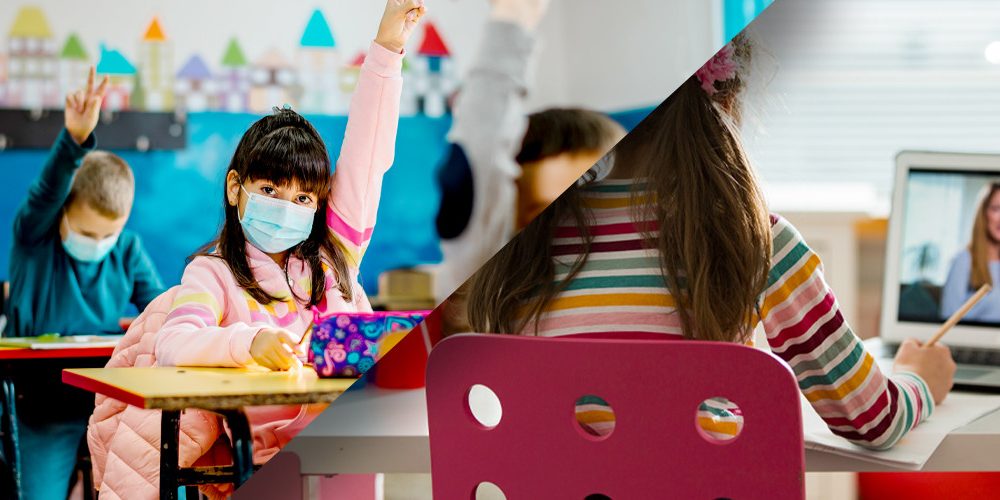
The landscape of education has undergone a profound transformation in recent years, largely driven by the integration of technology into the learning process. This evolution has been particularly evident in the context of remote and hybrid learning, which gained unprecedented prominence during the COVID-19 pandemic. In this article, we explore the pivotal role of technology in remote and hybrid learning, its impact on education, and the prospects for the future.
A New Educational Paradigm
The sudden shift to remote and hybrid learning was necessitated by the pandemic, which led educational institutions at all levels to close their physical doors temporarily. In this abrupt transition, technology emerged as the lifeline that kept education moving forward. While initially a response to an urgent crisis, the experience of remote and hybrid learning has opened doors to a new educational paradigm.
Enabling Connectivity
One of the primary roles of technology in remote and hybrid learning is enabling connectivity. Through the use of video conferencing platforms, learning management systems, and collaborative tools, students and educators were able to connect virtually. These platforms provided a lifeline for maintaining teacher-student and peer interactions, despite physical distancing.
Technology has also brought a new level of flexibility and accessibility to education. With online classes, students are no longer bound by geographical limitations, allowing access to a wider range of educational resources. Those include but are not limited to massive open online courses, virtual libraries and databases, essay writing service UK, webinars and educational webcasts, and others. This flexibility has enabled people to continue their education while balancing work, family, and other commitments.
Challenges and Solutions in Remote and Hybrid Learning
The rapid adoption of technology in education, particularly in the context of remote and hybrid learning, has brought about a unique set of challenges and corresponding solutions:
- Digital Divide: The digital divide, where not all students have access to necessary technology and internet connectivity, remains a significant challenge. To bridge this gap, educational institutions and policymakers are initiating programs to provide devices and connectivity to underserved students.
- Isolation and Engagement: Remote learning can sometimes lead to feelings of isolation due to the absence of in-person interactions. To address this, technology has been instrumental in fostering virtual connections through collaborative tools, discussion forums, and video conferencing platforms.
- Teacher Training: Educators have had to adapt to the changing educational landscape and develop new skills for effective online teaching. Professional development programs and resources are being provided to help educators become proficient in online teaching methods.
- Personalized Learning: The challenge of meeting individual student needs in remote and hybrid learning is addressed through technology-driven personalized learning. Learning analytics and adaptive platforms allow educators to tailor instruction to each student’s unique requirements.
These challenges, while significant, have sparked innovative solutions that continue to shape the landscape of remote and hybrid learning. Technology is a driving force behind these solutions, making education more accessible, engaging, and tailored to individual needs.
Overcoming Isolation
Remote learning can sometimes lead to feelings of isolation. The absence of face-to-face interactions and the physical classroom environment can create a sense of detachment. However, technology has been instrumental in mitigating these feelings by fostering virtual connections. Collaborative tools, discussion forums, and video conferencing platforms enable students to interact with their peers and instructors.
Moreover, the rapid adoption of technology in education during the pandemic has illuminated the possibilities for the future. Educational institutions are now better equipped to implement blended learning approaches, combining in-person instruction with online resources. This hybrid model capitalizes on the strengths of both traditional and remote learning.
Personalized Learning
One of the key advancements that technology brings to education is the ability to personalize learning experiences. Learning analytics and data-driven insights allow educators to tailor instruction to individual student needs. Adaptive learning platforms use algorithms to provide customized content and exercises based on a student’s progress and areas of struggle.
Technology has the potential to make education more accessible and inclusive. For students with disabilities, digital resources can be adapted to accommodate their needs. Captioning, screen readers, and voice-to-text applications help ensure that educational content is accessible to all.
Professional Development for Educators
Teachers and instructors have had to adapt to the changing educational landscape and develop new skills in using technology effectively. Professional development programs have emerged to help educators become proficient in online teaching methods, ensuring that they can provide quality education in remote and hybrid settings.
The Bottom Line
The role of technology in remote and hybrid learning has been transformative. It has facilitated connectivity, enhanced engagement, and introduced new levels of flexibility to education. Despite the challenges, technology has allowed students and educators to adapt to changing circumstances and continue the pursuit of knowledge.
As we move forward, the integration of technology into education will remain a cornerstone of the modern learning experience. It has not only provided solutions for immediate challenges but has also opened the door to innovative teaching methods and a more accessible, inclusive, and personalized approach to education. The intersection of technology and education continues to shape the future of learning.
Disclosure: If we like a product or service, we might refer them to our readers via an affiliate link, which means we may receive a referral commission from the sale if you buy the product that we recommended, read more about that in our affiliate disclosure.
Read More: World News | Entertainment News | Celeb News
Tech Follows






